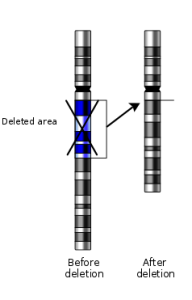Cochrane review published on 1p19q detection in glioma
- 8 March 2022
 University of Bristol researchers have contributed to an NIHR funded update to the Cochrane review on 1p19q detection in glioma, which has just been published.
University of Bristol researchers have contributed to an NIHR funded update to the Cochrane review on 1p19q detection in glioma, which has just been published.
Gliomas are a type of brain tumour (cancer). There are different types of glioma, with different changes in their genetic material. One of the possible genetic changes is the loss of parts of two of our 23 chromosomes. When both a specific part of chromosome 1 and a specific part of chromosome 19 are missing, it is known as ‘1p/19q codeletion’. 1p/19q codeletion is used to diagnose a glioma known as an oligodendroglioma. Presence of 1p/19q codeletion can also tell us how long a patient with a glioma may survive and which is the best medicine to treat that patient.
The researchers wanted to find out which is the most accurate and cost‐effective way to identify 1p/19q codeletion in gliomas.
Kathreena Kurian, Professor of Neuropathology, University of Bristol Medical School, and Honorary Consultant Neuropathologist at North Bristol Trust, said:
“In our review, most techniques (except G‐banding) appeared to have good sensitivity (few false negatives) for detection of 1p/19q codeletions in glioma against both FISH and PCR‐based LOH as a reference standard. However, we judged the certainty of the evidence low or very low for all the tests. There are possible differences in specificity, with both NGS and SNP array having high specificity (fewer false positives) for 1p/19q codeletion when considered against FISH as the reference standard. The economic analysis should be interpreted with caution due to the small number of studies.”
Listen to Professor Kurian’s Cochrane podcast on the review.